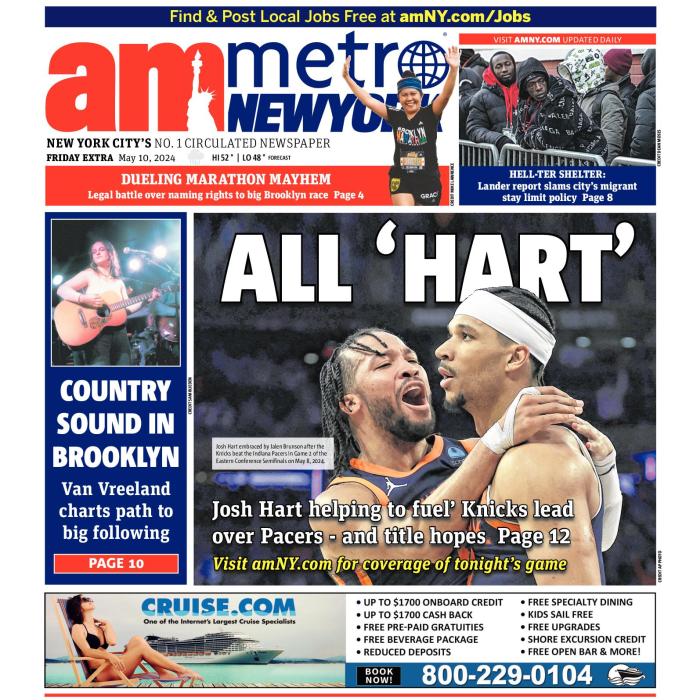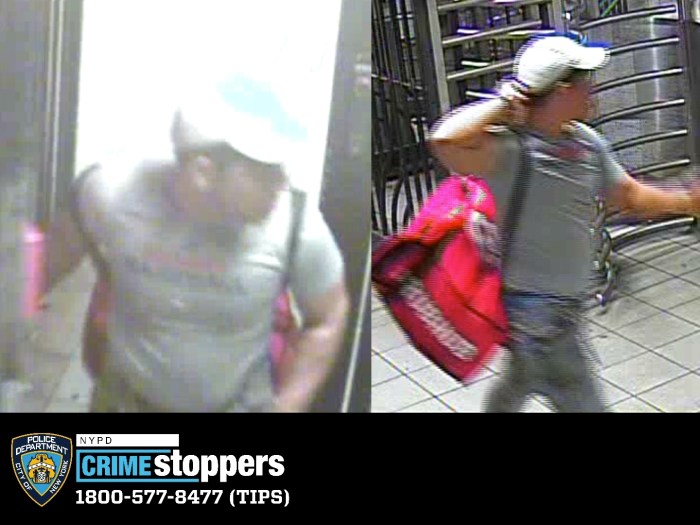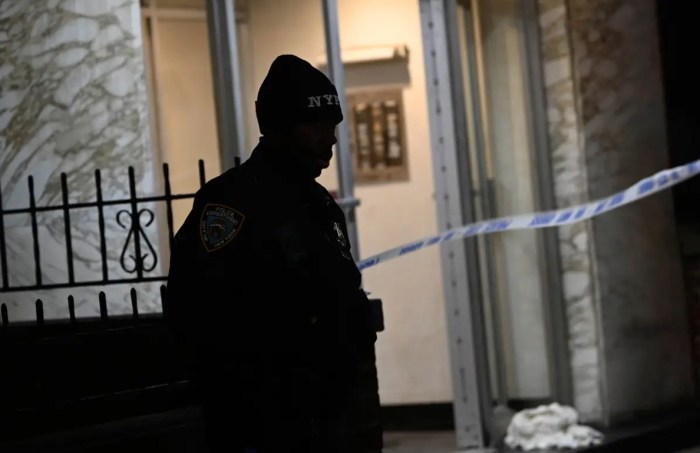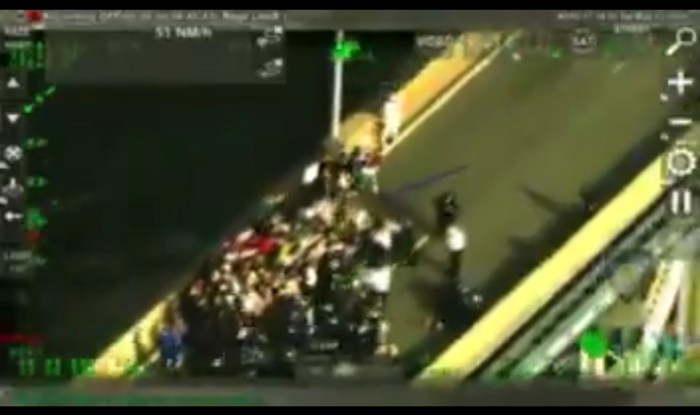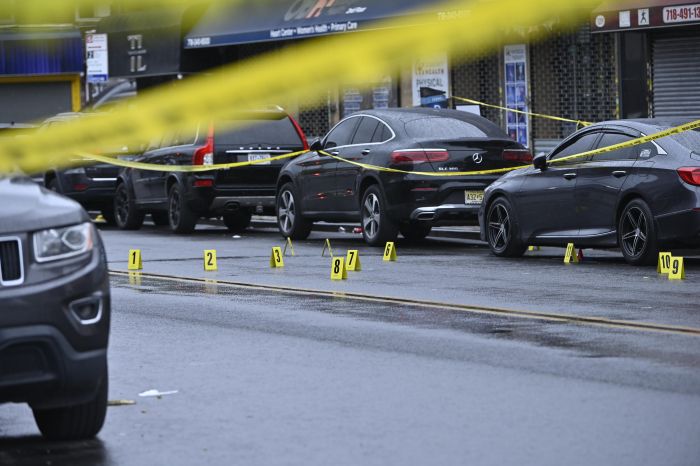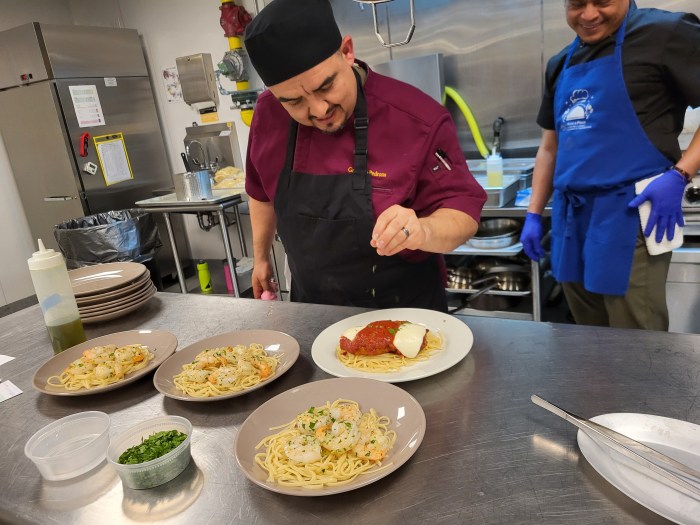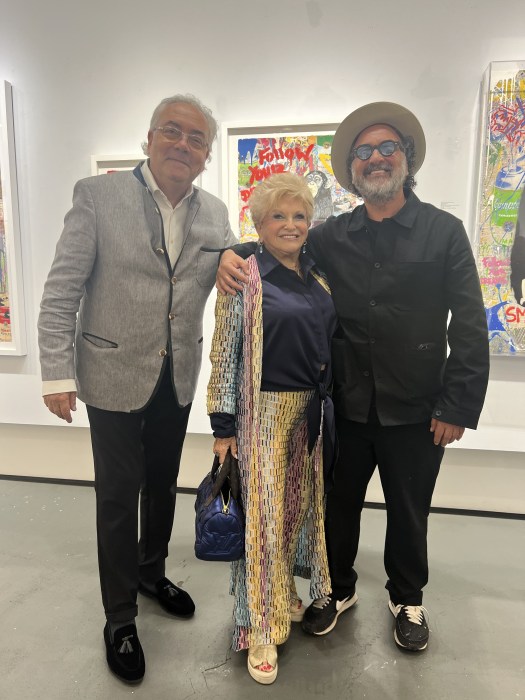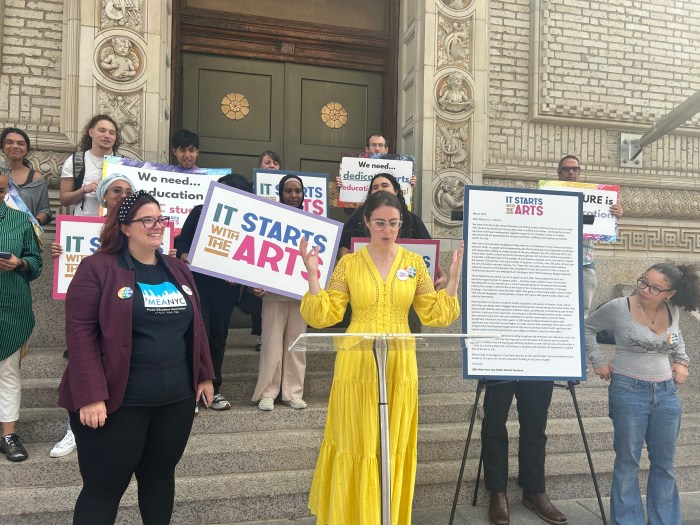
The map shows the area near the 9/11 Memorial: Liberty St. is lined in green, Cortlandt Way in red and Greenwich in blue. Below, a crowded Liberty St. (left) while Cortlandt Way remains closed (right).
BY DUSICA SUE MALESEVIC and JOSH ROGERS | Since the 9/11 Memorial Museum opened in May, many parties — Community Board 1, the mayor’s office, N.Y.P.D., and the Port Authority — have been working to mitigate the crush of tourists that have descended on Liberty St. Some have wondered why the opening of Greenwich St. between Liberty St. and Vesey has been overlooked.
Cortlandt Way, which was to help alleviate the influx of foot traffic on Liberty St., opened a few weeks ago, and then closed again because of safety concerns as a crane was erected near World Trade Center 3. It is anticipated to reopen next week.
The opening of the museum allowed the memorial to eliminate its ticketing system and allow passersby to visit the memorial. But more pedestrian space has not reduced the crowds. Far from it.
There is a lot happening on Liberty St.: hawkers selling WTC Never Forget books; N.Y.P.D, Downtown Alliance security, and pedestrian safety from a private security firm all trying to help the flow of pedestrians; a member of the Tribute Center sometimes stationed outside; vendors selling everything from water to tours to bus tickets; construction workers and tourists.
There is the idea that pedestrian flow could be allayed if Greenwich St. between Vesey, where the temporary PATH station is located, and Liberty Sts. was opened.
“In the fall we are hoping that there will be a north-south entrance/exit from Vesey along Greenwich St.,” Community Board 1 chairperson Catherine McVay Hughes said in an email to Downtown Express last week.
 Another interested party, speaking on the condition of anonymity because of the sensitivity of the discussions, also thought opening Greenwich St. would be a good solution.
Another interested party, speaking on the condition of anonymity because of the sensitivity of the discussions, also thought opening Greenwich St. would be a good solution.
Clearly, the Port Authority has bristled at the idea, and did not want to comment on the opening of Greenwich St. between Vesey and Liberty.
It’s not clear if the Port would be ready to open the street next year even after the permanent transit hub opens. Construction at 3 W.T.C. near Greenwich is expected to continue for another four years.
On the other hand, the N.Y.P.D. had been expecting the street to reopen next April. In the spring, leaders of the World Trade Center Command spoke at a Community Board 1 meeting and said that by April 2015, when World Trade Center 1 and 4 as well as the transit hub are expected to be completed, Greenwich St. would be open to pedestrians and some vehicles, including taxis carrying residents with security clearance.
It’s hard to know how many more people are visiting the site simply because there is a new walkway connecting the Financial District to Battery Park City. As of Tues. Aug. 26, the 9/11 Memorial Museum has had more than 850,000 visitors since opening in May this year, according to Michael Frazier, spokesperson for the 9/11 Memorial and Museum. Thus far this year, the memorial has had 3.58 million visitors, some of whom may have visited the museum as well. In 2013, the memorial had more than 5 million visitors. Since opening in September 2011, there have been 15 million visitors.

Steven Abramson, who has lived at 114 Liberty St. since before 9/11, acknowledged that the city and the Port have done some things.
But “it’s pretty much the same,” Abramson said in a phone interview. “The crush of tourist traffic has not really been abated.”
Abramson is upset by the book dealers and the occasional handing out of flyers that include strip clubs on Murray St. “Its a circus,” he said. “It in no way reflects the dignity of the area.”
N.Y.P.D. has been especially helpful in telling sellers to move away from the front of Abramson’s building, he said, but “day to day life can be extremely difficult.”
When Cortlandt Way is open, he said, it does help relieve the flow on Liberty a little.
Another change is Tribute Center tours congregating on Cedar instead of Liberty.
“Tours are traditionally 15 – 25 people and exit from the lower level out the back door onto Cedar St. and proceed up [the already open part of] Greenwich to the 9/11 Memorial,” Jennifer Adams-Webb, chief executive officer for the 9/11 Tribute Center, said in an email.
Hughes said in a phone interview that, “With the density Downtown in Lower Manhattan and the amount of vehicle traffic, tour buses, and pedestrian traffic in a very dense area — having a plan in place is something that the community board has been advocating,”
Hughes, C.B. 1’s leader, took the Downtown Express on a tour of the area and pointed out the changes that have been made, which include large signage.
“Nothing happens around here without everyone working together,” said Hughes. She said the Port Authority has taken the lead, and emphasized the positive changes and concerted effort of all involved with the plaza.
“The fact that it is as open as it is, is incredible,” she said. “There has been relief in the area generally. As the site changes, it needs to be tweaked.”
A Port spokesperson said they will continue to work with the community on reducing the problem.
“This is a new issue added to all the other issues,” said Pat Moore, chairperson of Quality of Life Committee for Community Board 1, whose building faces Liberty. She has fielded complaints from Liberty St. residents who are hemmed in by barriers.
A Liberty St. business owner, who refused to give his name, was angry that now that the street was finally reopened — after being dead for four and a half years — there was an effort to direct foot traffic elsewhere.
Jahr Mhmud, an employee at Liber Tees that sells knick knacks and souvenirs, said that this summer was better for business.
“It’s not easy,” said Abramson. “We’ve made a commitment to Lower Manhattan.”
